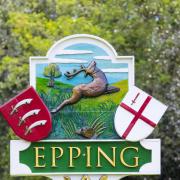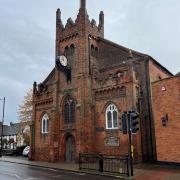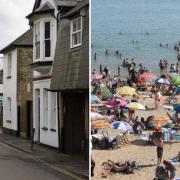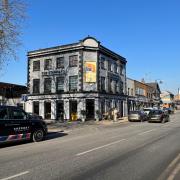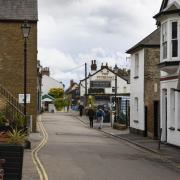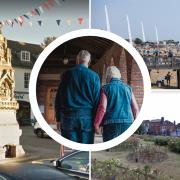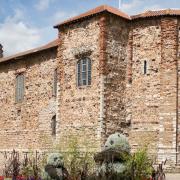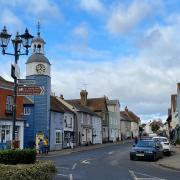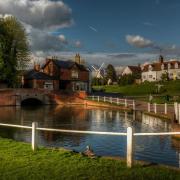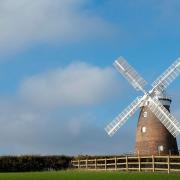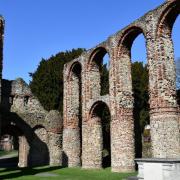Chelmsford is on the rise, blossoming from its city status. One iconic landmark which has been part of the landscape for 300 years, and is also enjoying a renaissance, is Hylands House. Petra Hornsby reveals more

Chelmsford was awarded city status in 2012 when it was chosen from a shortlist of potential new cities (including St Asaph in Wales and Perth in Scotland) drawn up in honour of the Queen’s Diamond Jubilee. Since then the city has been growing in strength, status and size – literally.
Growth is certainly a key word for the city with many new houses and developments being built, old buildings being converted into luxury dwellings and the centre recently boasting the addition of the Bond Street shopping development.
Business seems to be doing well too and, being so close to London, many younger professionals and families are opting to move to Chelmsford to take advantage of the housing opportunities, excellent schools and the fabulous countryside that surrounds it.
But Chelmsford’s success as a modern thriving city owes so much to its past. The Romans settled there and called it Caesaromagus, which translates as Ceasar’s Market Place, but it was much later that the town truly prospered from its market.
Bishop William of London was responsible for granting royal permission for weekly markets in 1199 and then in 1201 an annual fair was also given the King’s approval. This brought in tradesmen from not just the local area but further afield too – a sign of just how important retail would become for the town, perhaps.
At the turn of the 20th century, the town – along with the rest of the country – would play its part in and bear the damage of two world wars.

The factory of communications pioneer Guglielmo Marconi and the Hoffmann engineering works, which made ball and roller bearings, were targeted by the Luftwaffe during World War II, which also damaged houses close to the factories.
Another famous building, Hylands House, had a role to play in both wars, but its function up until then had been one of fitting decadence for its wealthy and privileged owners.
Although much of the city’s history and its current modern expansion is focused on its centre, Hylands Estate is situated on the outskirts of the city, but has a rich and significant history, playing an important part in attracting thousands of visitors and tourists to Chelmsford every year.
The house and grounds were built around 300 years ago for Essex lawyer Sir John Comyns and the initial plan was for a red brick Queen Anne design set in 400 acres.
Cornelius Kortright took ownership in 1797 and swiftly began to update the estate. Influenced by the Romantic Movement of the time and with the help of revered landscape architect Humphry Repton, significant changes were made to the parkland including a Serpentine Lake and its extension to meet the River Wid.
Pierre Labouchère (1814-1839) was a merchant banker by trade. He hired Dutch designer Francis Nieman to introduce fruit and vegetables that were considered rather exotic for the English climate. This he managed to do very successfully, in part thanks to the construction of a heated conservatory or glasshouse almost 280ft long.

His forced growing of apricots, melon and raspberries earned him an award from the Horticultural Society of London in 1832. It was also Labouchère who was responsible for changing the exterior of the building to the way it looks today with its neo-classical symmetrical design façade, as well as the formal Pleasure Gardens and Georgian Stable Block.
MP for Harwich, John Attwood, purchased the estate on Labouchère’s death and extended it to 4,300 acres while also building high walls and creating natural screening. At his request, roads were diverted or privatised and houses were demolished for him to enjoy uninterrupted views across his land.
Arthur Pryor (1858-1904) seemed to have a more generous and sociable spirit. Under his ownership the house and grounds hosted fetes, concerts and other social events. He was another one keen on horticulture and the gardens, tended by gardening staff, produced displays that regularly won awards at the Royal Horticultural Show.
Sir Daniel and Lady Gooch took ownership in 1905 and they also made the best of the gardens by growing plenty of fruit and vegetables to feed the many guests who stayed in the house.
During World War I, Hylands House was used as an emergency hospital, but shortly after that it would have its final private owners, Christine Hanbury (1922-1962) and her husband John. Mrs Hanbury became a widow suddenly in 1923 and then went on to lose her son during World War II.
The estate was commandeered as a German prisoner of war camp and then housed an SAS base. The grieving Mrs Hanbury made several changes to the gardens, including adding a lawn tennis court, magnificent rhododendron borders and a private area within the gardens dedicated to her late husband and son.

Following her death in 1962, the house was left to her trustees and the house was put up for sale for the final time.
Chelmsford Borough Council obtained the house in 1966 at auction and by then the house was in a serious state of disrepair. Today it is fully restored with the Georgian entrance hall, the grand staircase, the Boudoir and the Blue Room all highlights that reveal the characteristics of the time and the various preferences of the occupants.
All its features, attention to detail and finished elegance make for a very desirable venue for weddings, celebrations and important corporate events.
The parkland and gardens have also been worked on extensively and, in keeping with the plans of Humphry Repton, are a real treat for anyone interested in green-fingered pursuits or a simple love of plants.
Visitors can enjoy impressive planting schemes, ancient woodlands, grasslands and the newly-restored Serpentine Lake. The Pleasure Gardens, hidden within the park, represent a wide selection of planting themes past and present.
In 2007, the venue entertained Scouts from over 160 nations for the Scouting organisation’s 21st world jamboree, marking its 100th anniversary.
In honour of this, the One World Garden was constructed within the Pleasure Gardens. Beautifully planted and with a small stream which winds throughout, the space is designed for children who can enjoy their very own Cob Nut Walk.
Overall, the park is a hive of activity and is used daily by the public. It has five mapped walks laid out ranging from a short walk lasting just 30 minutes to a much longer four-mile route, and there is provision for cyclists too.
The Stable Block is now a visitor centre and home to resident artists and craftsmen who practise in a variety of styles. The venue runs workshops and demonstrations, and is open to visitors during the week.
Hylands is also well known for hosting the popular V Festival, which this year was replaced by the RIZE festival. The history of the V Festival goes back to 1996 and since then, annually, thousands of music enthusiasts have descend on the park for a weekend of live music.
With such an incredible history of ownership and changes both architectural and horticultural, Hylands House and Estate has had quite a journey, but it stands today as testament to Chelmsford’s City Council and their dedication to restore it to its full glory and keep it open for all to enjoy in so many ways.
_________________




